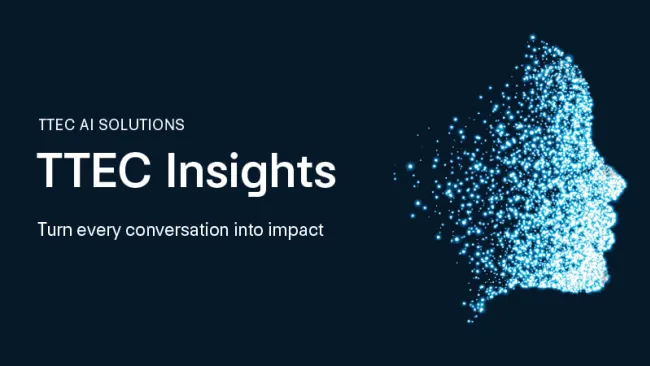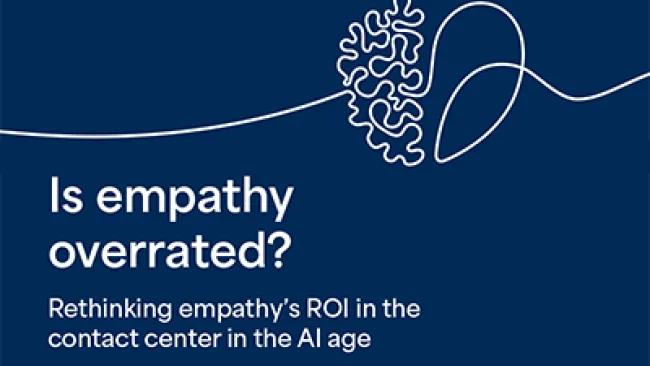This blog was excerpted from the upcoming Summer/Fall 2019 issue of the Customer Strategist journal. Subscribe today to get the whole story, delivered in September.
Whether riding a bike, acing that test, or strengthening a career skill, we improve by looking at what we’ve done in the past. This is just as true in the contact center space, where interaction analytics, better known as speech analytics, provide companies with 20/20 vision on their customer interactions and a path for action to enhance them. And as contact centers become increasingly digital and add new voice-based channels, more organizations are looking to speech analytics for growth and insights.
But there’s a catch to this innovative tool. Organizations have rushed to implement speech technology while overlooking key benefits. It’s important that leaders understand where speech analytics can best be utilized to understand associate and customer conversations at different moments of the journey.
Here are four key areas where speech analytics can help your contact center foster growth, enhance the customer’s journey, and train associates faster and more effectively.
1. Enhanced associate training
Speech analytics technology is a fantastic method for discovering information that can be leveraged to train associates better. Speech analytics identify not only the keywords, phrases, and emerging topics that are driving successful engagements, but also the cadence in which they should be said or written during the engagement.
For instance, deep diving into past dialogue can help identify what top performing associates do when interacting with customers and provide insights for other associates, as well as improve the actions of lower performers. But the main goal isn’t about singling out those who are struggling. Rather, speech analytics can be used to identify coaching opportunities to develop employee skill sets.
TTEC’s word cloud coaching, for example, creates a word cloud of an associate’s language and the flow of his or her conversations. This personal word cloud utilizes the replies and reactions in an associate’s conversation to create coachable insights. Leaders can use word clouds to show associates which aspects of their daily activities need improvement and then guide them on how an ideal conversation should flow. Illustrating a conversation provides a tangible and interactive learning opportunity, as opposed to simply listening to prior calls.
2. Personalized customer support
If contact centers are to adapt to changing customer expectations, the customer journey must be understood and enhanced. Our experience has shown that there isn’t just one clear path to solving a problem. Every customer enters into the engagement with a unique set of thoughts and expectations. Mapping the customer journey and aligning engagement strategies to meet that path drives desired results. Speech analytics gives you the insight to ensure the right strategies are leveraged through metrics and performance.
Use speech analytics to identify insights into the customer journey and develop processes and tactics to deliver the right message to the right person at the right time. Additionally, identify call drivers to enable customer self-service, improve associate training, and enhance call routing.
3. Deeper voice of the customer insights
Speech analytics can be invaluable in uncovering the voice of the customer. Customer sentiment, thoughts about your company and your competitors, emerging topics of relevance and importance, and insights into what your customers care about the most can all be found through interaction or speech analytics.
Share insights from the voice of the customer in the contact center throughout your organization, driving product enhancements, market share gains, increased customer lifetime value, and higher customer satisfaction scores.
4. Enhanced quality assurance and compliance
Quality assurance has traditionally focused on a sample set of calls that are listened to, measured on a scorecard of simple metrics, and applied in coaching to improve results in small steps. In this environment, a quality assurance team can only listen to so many calls, and their feedback from random calls will not paint an honest picture of what is going on with the majority of associates.
Using speech analytics, you can now “listen” to all interactions, calls, chats, and SMS texts to gain insights into what is really working. Speech analytics can align your quality assurance teams to talking points that impact outcomes and drive the achievement of goals. Additionally, the added rigor and insights into compliance mitigates the risk a non-compliant interaction can have on a customer relationship.
A more comprehensive approach to quality assurance across the entire engagement cycle provides insights at every point of the interaction between the customer and associate. The findings can help understand the bigger picture of the interaction and a better grasp of the different points of engagement.
Let your voice be heard
The true value of speech analytics comes from applying the processes, uncovering the data, and developing the insights within an operational program that deliver results and feeds the business intelligence machine.
In a contact center, thousands of voices speak at once, but so few are heard. It is time to listen to what our associates and customers have to say using interaction and speech analytics, then apply them to help each interaction grow and mature.
















